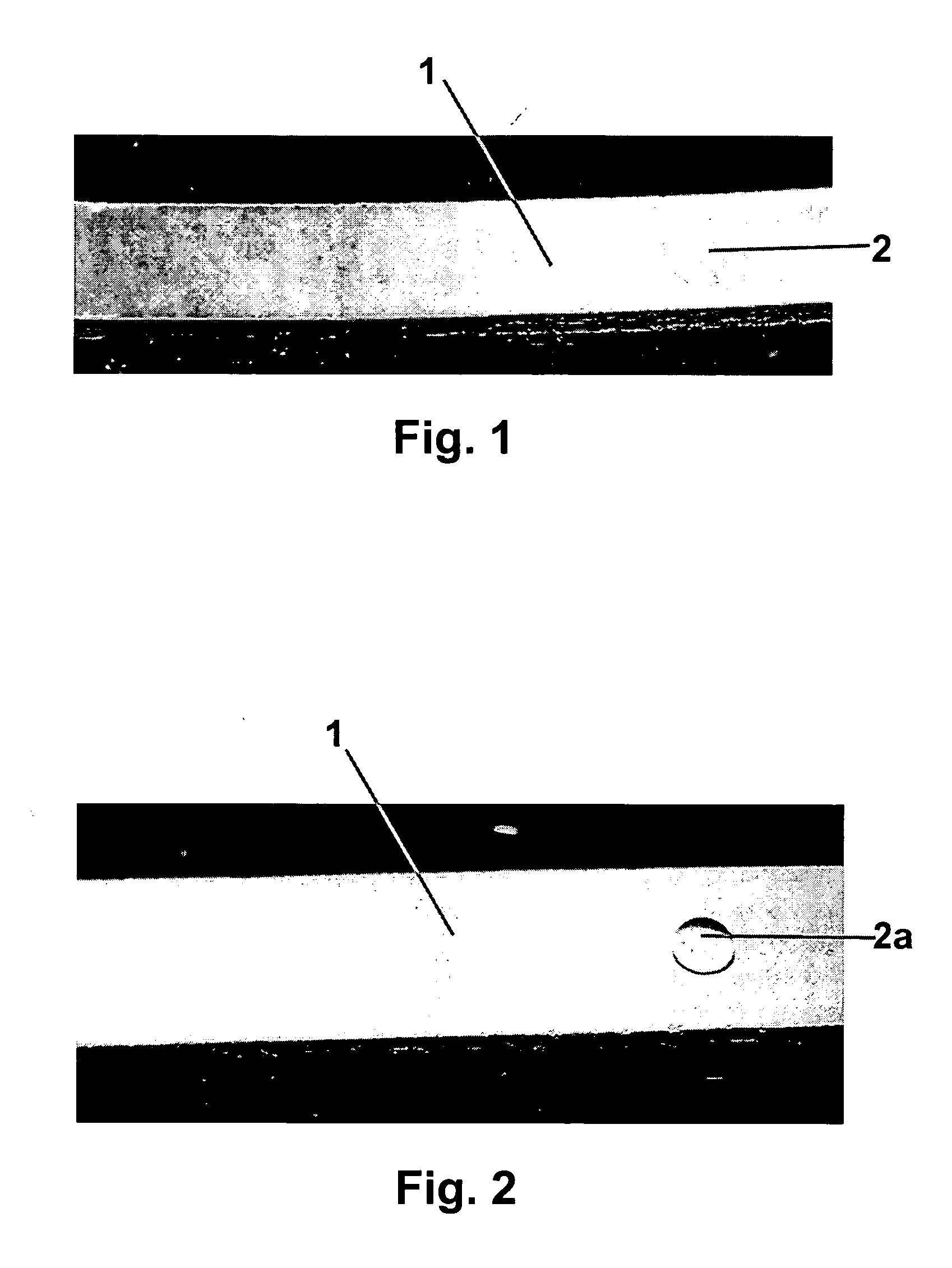Ceramic structures having hydrophobic coatings
a ceramic honeycomb and coating technology, applied in the direction of catalyst activation/preparation, metal/metal-oxide/metal-hydroxide catalysts, machines/engines, etc., can solve the problems of only using three-way catalysts, diesel emissions have come under attack in the united states, and the harmful effects of the environment and on humans, so as to reduce the absorption effect of ceramic honeycomb
- Summary
- Abstract
- Description
- Claims
- Application Information
AI Technical Summary
Benefits of technology
Problems solved by technology
Method used
Image
Examples
example 1
[0046] In one embodiment, as described above, the passivating material is incorporated directly into the standard cold set cordierite cement which itself can thereafter be applied to the substrate material. Reported in Table I is the standard skin composition (in wt. %) and the same standard skin composition (also in wt. %) that has incorporated therein a methyl phenyl silicone resin passivating material which renders the cordierite skin or coating hydrophobic.
TABLE IStandard Skin CompositionPassivated Skin CompositionGround Cordierite62.5%Ground Cordierite55.5%(50 / 50 mixture of(50 / 50 mixture ofd50 = 40 μm / d50 = 40 μm / d50 = 12 μm)d50 = 12 μm)Methylcellulose Binder 0.5%Methylcellulose Binder 0.5%(Dow Corning(Dow CorningMethocel A4M)Methocel A4M)Colloidal Silica 4.0%Colloidal Silica 3.5%(Ludox)(Ludox)Aluminosilicate fiber 17%Aluminosilicate fiber 15%(Unifrax QF-180)(Unifrax QF-180)Deionized Water 16%Deionized Water19.5%Rheology modifier 0.5%(Alcogum SL-70)Silicone Resin Sol'n 5.5...
example 2
[0049] Four cordierite ceramic samples comprised of the standard cordierite skin composition detailed in Table I are produced; in particular 2 mm thick (100 mm×200 mm) sheets are formed. The first, for comparison, is not coated with a passivating material, while the other three sheets are coated with the inventive hydrophobic coatings. The passivating materials used for Inventive Samples A, B and C reported in Table II included, respectively, silicone resin (Dow Corning DC233 Silicone Resin dissolved in dibasic ester of diethyl adipate, in a 2:1 weight ratio), tung oil, and a copolymer consisting of Michem 4983R ethylene acrylic acid copolymer. For each of the inventive samples the passivating material is applied to the standard skin composition sheet (same wt % as above) by dipping the substrates for a time sufficient to saturate the sheets—approximately 1 min.
[0050] Each of the four substrate samples (one standard and three coated) are immersed in a cerium nitrate (CeNO3)3 cataly...
example 3
[0052] Sixty two ceramic honeycomb samples are produced (31 comprising cordierite; 31 comprising aluminum titanate); each of the samples being comprised of an 8 mm×8 mm×50 mm bar cut from a ceramic honeycomb of corresponding composition. Each of 31 different passivating coating materials, as detailed in Table III, is applied to a cordierite honeycomb and aluminum titanate honeycomb bar. To apply these coating materials, each of the substrates is immersed in a room temperature dilute coating material solution for two minutes. The coating materials / passivation coating concentration utilized are detailed in Table III; 10% IPA representing a 10% isopropyl alcohol dilute solution, 10% H2O representing a 10% deionized water dilute solution and 100% representing a full strength material solution. The excess coating is then blown out of the samples using compressed nitrogen. The coated samples are then dried in a recirculating oven at 60° C. for a minimum of two hours.
[0053] The test used ...
PUM
| Property | Measurement | Unit |
|---|---|---|
| Temperature | aaaaa | aaaaa |
| Temperature | aaaaa | aaaaa |
| Temperature | aaaaa | aaaaa |
Abstract
Description
Claims
Application Information
 Login to View More
Login to View More - R&D
- Intellectual Property
- Life Sciences
- Materials
- Tech Scout
- Unparalleled Data Quality
- Higher Quality Content
- 60% Fewer Hallucinations
Browse by: Latest US Patents, China's latest patents, Technical Efficacy Thesaurus, Application Domain, Technology Topic, Popular Technical Reports.
© 2025 PatSnap. All rights reserved.Legal|Privacy policy|Modern Slavery Act Transparency Statement|Sitemap|About US| Contact US: help@patsnap.com

